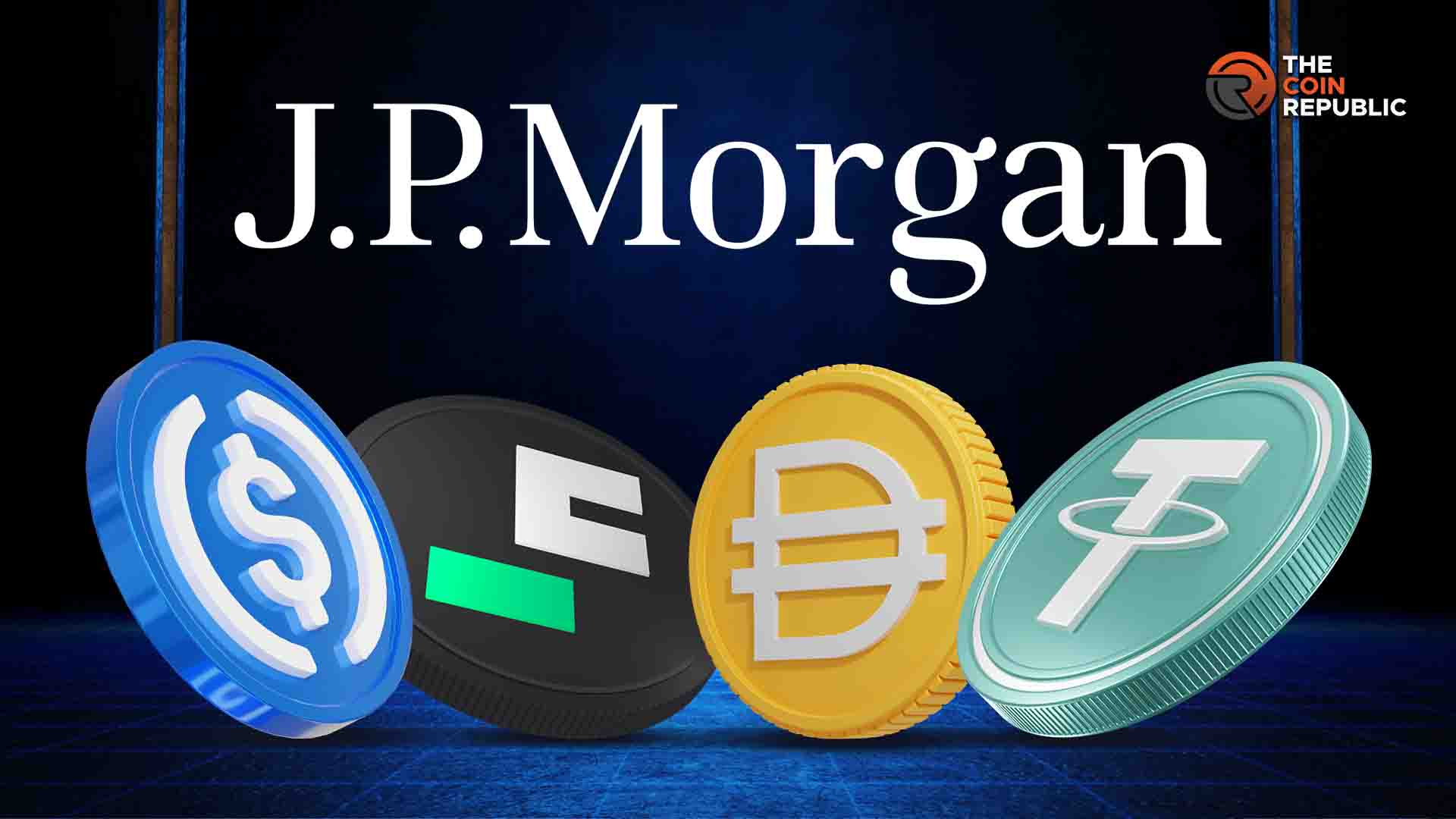JPMorgan Forecasts $500B Stablecoin Boom by 2028 – Here’s Why It Matters
Wall Street's sleeping giant just woke up to crypto—and its prediction is explosive.
JPMorgan analysts project stablecoins will balloon to a $500 billion market by 2028, signaling institutional adoption isn't coming—it's already here. The same bank that once dismissed Bitcoin now charts growth trajectories for dollar-pegged tokens. Ironic, isn't it?
Behind the numbers:
- DeFi's plumbing demands stable collateral
- TradFi institutions hedging crypto volatility
- Emerging markets bypassing dollar controls (who needs SWIFT when you've got USDT?)
One cynical footnote: Nothing accelerates banking innovation like the threat of being irrelevant. When crypto startups eat your lunch for a decade, suddenly blockchain doesn't seem so silly.
Watch this space—the race to tokenize everything just hit warp speed.

Challenging bullish stablecoin predictions, JPMorgan has projected that the market will reach $500 billion by 2028 rather than the multi-trillion dollar estimates from other financial institutions.
The bank cited minimal mainstream adoption and regulatory hurdles as key factors limiting growth potential in the dollar-pegged cryptocurrency sector.
JPMorgan Challenges Bullish Market Projections
JPMorgan’s bearish forecast is the opposite of what other big finance institutions have forecast. In a June 30 paper, Bernstein predicted that supply WOULD rise to roughly $4 Trillion over the following ten years.
Standard Chartered had earlier predicted that the stablecoin market would reach $2 Trillion by 2028.
According to the biggest bank in terms of size, the stablecoin market is currently worth $250 Billion, with the majority of its value being utilized for collateral, decentralized financing, and cryptocurrency trading.
Payments adoption remains low, at only 6% of total demand, or around $15 Billion, as estimated by JPMorgan.
The bank contends that stablecoins supplanting fiat currency for everyday transactions is a far cry from today.
Various factors make such a dismal prognosis likely, including limited applications outside crypto markets and scattered regulatory environments that cast a shadow of doubt on the would-be adopters.
International uptake also faces constraints, as most countries focus on developing their own central bank digital currencies or strengthening existing payment systems.
China’s central bank has pledged to expand international use of the digital yuan, while companies like ANT Group plan to apply for stablecoin licenses in Hong Kong through their overseas operations.
JPMorgan notes that neither China’s e-CNY expansion nor the success of Alipay and WeChat Pay serve as templates for future stablecoin growth.
GENIUS Act Could Change Stablecoin Industry
On June 18, 2025, the Senate passed the GENIUS Act, which greatly expanded the stablecoin market in the United States.
The Guiding and Establishing National Innovation for U.S. Stablecoins (GENIUS) Act aims to create the first comprehensive federal framework for payment stablecoin issuance, regulation, and oversight in the United States.
The legislation enjoys strong bipartisan support and has backing from the WHITE House, making its passage through the House highly likely.
The Act would provide clear regulatory guidelines addressing issuer eligibility, reserve requirements, oversight protocols, transparency standards, and consumer protection measures.
Only federally regulated banks, specifically eligible nonbank companies, and state-licensed issuers under stringent guidelines would be allowed to create regulated stablecoins under the new structure.
The Act requires adherence to consumer protection and anti-money laundering regulations, fully collateralized reserves, and frequent public disclosures.

Bo Hines, Top Digital Assets Adviser to the U.S. President, believes stablecoin regulation could push the digital asset industry to $15-20 trillion in value.
He suggests this regulatory foundation would enable tokenized public securities, 24-7 markets. Global U.S. dollar access, positioning America as the global leader in crypto and fintech innovation.
Circle, a major stablecoin issuer, recently went public on the NYSE and has applied for a national trust bank charter to align with the new regulatory requirements.
Limited Adoption Restricts Stablecoin Growth Potential
JPMorgan’s pessimistic view relies on the current limited application of stablecoins beyond cryptocurrency markets.
The bank’s report states payments use is merely 6% of overall stablecoin demand. It is approximately $15 Billion of the estimated $250 Billion market.
Most stablecoin use is still relegated to crypto trading, decentralized finance, and collateral provision.
This narrow use pattern is light-years from the broad financial integration by 2028 for which trillion-dollar projections are made.
Several barriers stand in the way of the adoption of stablecoins on mainstream payment systems. Decentralized regulatory mechanisms create uncertainty for corporations willing to integrate stablecoins.
However, a few applications of stablecoins beyond crypto markets reduce appeal among mainstream consumers.
The technological sophistication of stablecoin technology also creates challenges for general consumers who are accustomed to traditional payment systems.
JPMorgan contends that the traditional payment systems and new CBDCs are not providing good models for stablecoin expansion.

